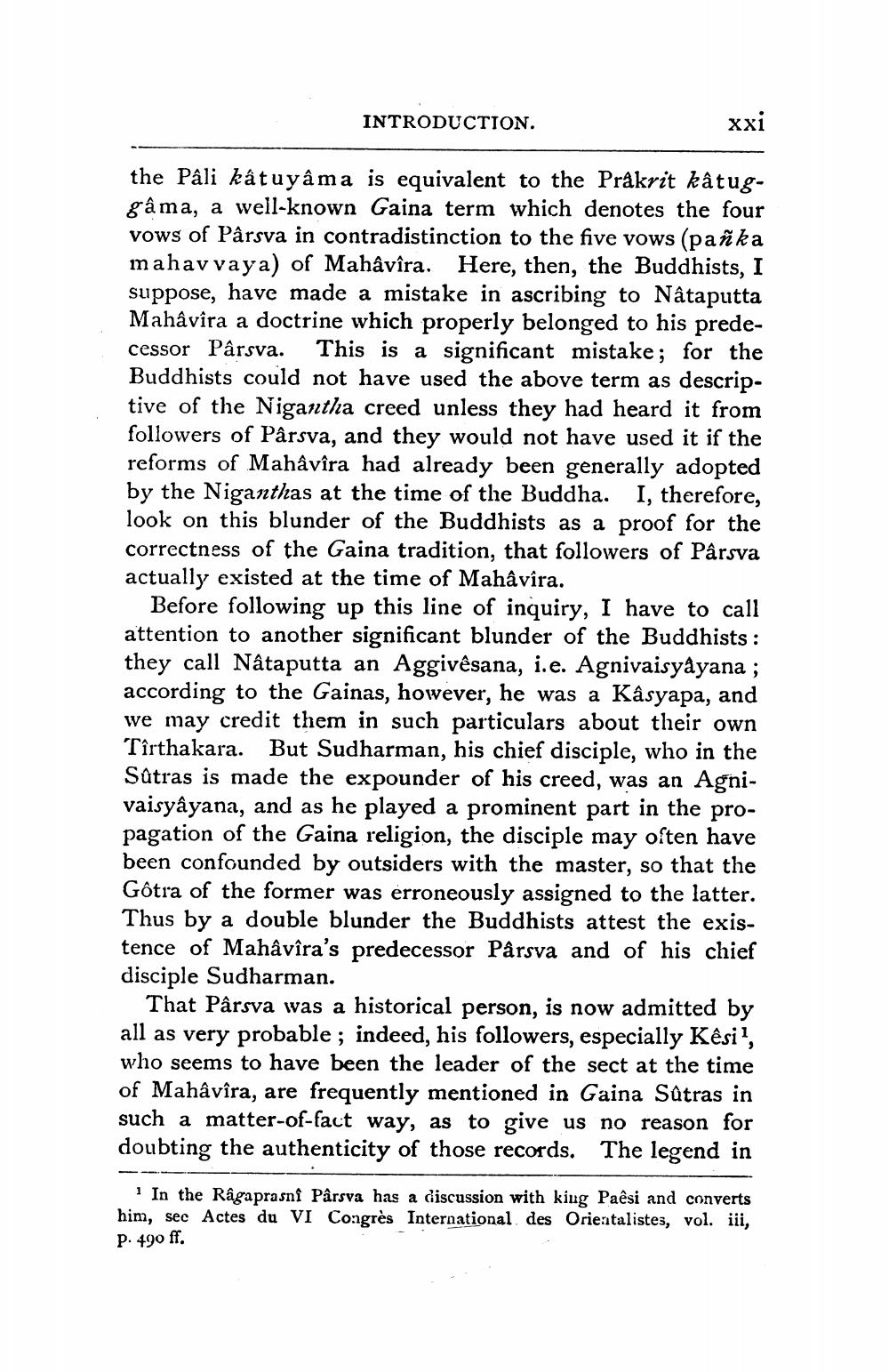________________
INTRODUCTION.
xxi
the Pâli kâtuyâma is equivalent to the Präkrit kâtuggâma, a well-known Gaina term which denotes the four vows of Pârsva in contradistinction to the five vows (pañka mahavvaya) of Mahâvîra. Here, then, the Buddhists, I suppose, have made a mistake in ascribing to Nâtaputta Mahâvîra a doctrine which properly belonged to his predecessor Pârsva. This is a significant mistake; for the Buddhists could not have used the above term as descriptive of the Nigantha creed unless they had heard it from followers of Pârsva, and they would not have used it if the reforms of Mahâvîra had already been generally adopted by the Niganthas at the time of the Buddha. I, therefore, look on this blunder of the Buddhists as a proof for the correctness of the Gaina tradition, that followers of Pârsva actually existed at the time of Mahâvira.
Before following up this line of inquiry, I have to call attention to another significant blunder of the Buddhists: they call Nâtaputta an Aggivêsana, i.e. Agnivaisyâyana ; according to the Gainas, however, he was a Kâsyapa, and we may credit them in such particulars about their own Tîrthakara. But Sudharman, his chief disciple, who in the Sætras is made the expounder of his creed, was an Agnivaisyâyana, and as he played a prominent part in the propagation of the Gaina religion, the disciple may often have been confounded by outsiders with the master, so that the Gôtra of the former was erroneously assigned to the latter. Thus by a double blunder the Buddhists attest the existence of Mahâvîra's predecessor Pârsva and of his chief disciple Sudharman.
That Pârsva was a historical person, is now admitted by all as very probable; indeed, his followers, especially Kêsi, who seems to have been the leader of the sect at the time of Mahâvîra, are frequently mentioned in Gaina Sûtras in such a matter-of-fact way, as to give us no reason for doubting the authenticity of those records. The legend in
In the Râgaprasni Pârsva has a discussion with king Paesi and converts him, see Actes du VI Congrés International des Orientalistes, vol. iii, P. 490 ff.




